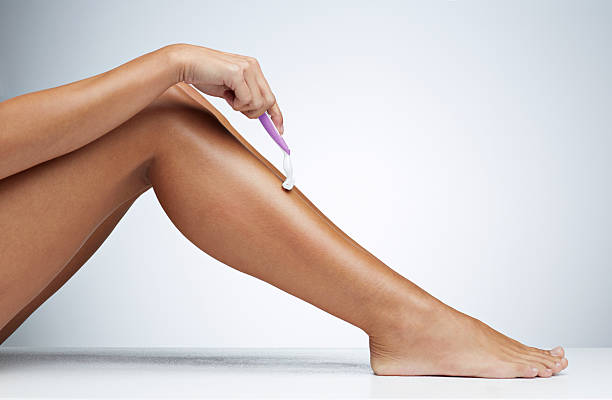
There is simply nothing worse than waking up a few days after your fresh bikini wax and seeing those nasty, red ingrown hair bumps! They were not on your list of accessories to go with that new swimsuit you just bought!
Unfortunately, some of us are more prone to getting them than others. While the right ingrown hair treatment and preventive steps can make a big difference, some are just inevitable.
They form from hair follicles curling up and growing back into the skin.
What causes ingrown hairs?
Ingrown hair occurs when a hair that’s been removed starts to grow back and curves into the skin. This usually happens after shaving, tweezing or waxing, according to the Mayo Clinic.
Ingrown hair might also be caused by:
- Pulling your skin when you shave. This action causes hair to draw back into the skin.
- Tweezing.
When a hair penetrates your skin, this causes your skin to react to the hair in the same way it would to a foreign body, causing it to become irritated.
Ingrown hair that doesn’t clear up can lead to:
- Bacterial infection (from scratching)
- Patches of skin that are darker than usual (postinflammatory hyperpigmentation)
- Raised scars that are darker than the surrounding skin (keloids)
- Pseudofolliculitis barbae, also known as razor bumps
- Fine depressed scars (grooves)
So how do you treat it? Here is an all-natural ingrown hair treatment that is easy to make and gentle on the skin. And it smells divine, too!

Ingrown hair treatment recipe
Ingredients
- 3 tablespoons coconut oil
- 7 drops of lavender oil
- 12 drops of tea tree oil
Instructions
- Mix all ingredients in a small jar or bottle (preferably one that can be sealed off so you can use your mixture later).
- Apply a small amount to the affected area after shaving, waxing or any hair removal and rub in until it absorbs.
- Watch your ingrown hairs disappear!
CHECK OUT: Embarrassing Bikini Waxing Questions Answered
Coconut oil is an anti-fungal/anti-bacterial treatment that also moisturizes.
Tea tree oil has a tremendous amount of healing properties. It helps reduce redness and clears up infections.
The lavender helps soothe the skin and makes the mixture smell yummy.

Preventing future ingrown hairs
You can prevent ingrown hairs by avoiding shaving, tweezing and waxing. If you can’t avoid these options, the Mayo Clinic advises trying the following tips to make ingrown hair less likely:
- Before shaving, wash your skin with warm water and a mild facial cleanser.
- Apply lubricating shaving cream or gel a few minutes before shaving to soften the hair. Or apply a warm, damp cloth.
- Apply shaving cream and use a sharp, single-blade razor. This helps avoid a too-close shave.
- Don’t pull your skin while shaving.
- Shave in the direction of hair growth.
- Rinse the blade after each stroke.
- Rinse your skin and apply a cool, wet cloth for about five minutes. Then use a soothing after-shave product or a glycolic acid lotion to help remove dead skin cells (exfoliate).
The following hair removal methods may also help prevent ingrown hair:
- Electric razor or clippers. With the razor, avoid the closest shave setting. Hold the razor or clippers slightly away from your skin.
- Chemical hair remover (depilatory). The chemicals in hair removal products may irritate your skin, so test on a small patch of hair first.

Ingrown Hair FAQ
Should I pop an ingrown hair?
No, you should not pop an ingrown hair. Popping or picking at an ingrown hair can cause more harm than good. It increases your risk of:
-
Infection
-
Scarring or dark marks (hyperpigmentation)
-
Worsening irritation or inflammation
Instead, use gentle methods like warm compresses and light exfoliation to help the hair work its way to the surface naturally. If the area becomes very painful, red, or filled with pus, seek medical advice.
Do ingrown hairs go away by themselves?
Yes, most ingrown hairs go away on their own. Over time, your body can absorb the hair or the hair may naturally emerge from the skin. This process can take a few days to a few weeks, depending on how deeply the hair is trapped and how irritated the area becomes.
To help the healing process:
-
Avoid shaving or waxing the area until it heals
-
Gently exfoliate the skin with a mild scrub or chemical exfoliant
-
Apply soothing products like aloe vera, tea tree oil, or a warm compress
If ingrown hairs happen frequently or don’t go away, it’s a good idea to talk to a dermatologist.
Visit the BlackDoctor.org Skin and Beauty center for more articles.









